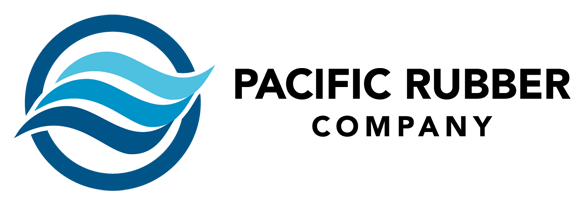Neoprene
Neoprene rubber is a synthetic rubber known for its excellent resistance to weathering, oils, chemicals, and heat. It was first developed by DuPont in the 1930s and has since become a widely used material in various industries. Neoprene rubber is composed of polymerized chloroprene and exhibits remarkable durability and flexibility. It can withstand a wide temperature range, from -40°C to 121°C, making it suitable for both low and high-temperature applications.
One of the notable properties of neoprene rubber is its resistance to oils, greases, and chemicals. It maintains its integrity and does not deteriorate when in contact with petroleum-based fluids, making it a preferred material for gaskets, seals, and hoses in the automotive and industrial sectors. Neoprene rubber is also highly resistant to ozone and UV radiation, allowing it to be used in outdoor applications without significant degradation.
Another key advantage of neoprene rubber is its excellent physical properties. It has good resistance to abrasion and tearing, making it suitable for applications that require durability and strength. Neoprene rubber also exhibits good flame resistance and is self-extinguishing, making it a valuable material in fire-resistant applications. Its flexibility and elasticity allow it to be easily molded into various shapes and sizes, making it versatile for a wide range of uses.
Neoprene rubber is a synthetic rubber with exceptional resistance to weathering, chemicals, oils, and heat. Its durability, flexibility, and resistance to abrasion make it a preferred choice in industries such as automotive, construction, marine, and electrical. Whether it’s providing sealing and insulation in harsh environments or protecting against chemical exposure, neoprene rubber continues to be a reliable and versatile material.
Neoprene’s widespread use in many applications across a wide range of settings is a result of its special combination of qualities. Neoprene is a polymer with moderate oil and gasoline resistance, great adhesion to fabric and metals, very good resistance to ozone and sunlight, good resistance to abrasion and flex cracking, and moderate to good resistance to alkalis and acids.
Our neoprene rubber products are offered in speciality products as well as Premium, Mid, Commercial, and Spec Grades.
Every product can be modified to fit your needs here at Pacific Rubber Company, including your specifications, physical characteristics, and other material features.
Neoprene’s growing popularity in numerous industries across a wide range of environments is a result of its special combination of qualities. We encourage you to reach out to us so we can help you select the right type of rubber for your project.
Common Name:
Neoprene
Generally Resistant To:
Moderate Chemicals and Acids, Ozone, Oils, Fats, Greases, and Solvents
ASTM D 2000 / SAE J200 Classification:
BC, BE
Chemical Name:
Polychloroprene
Generally Attacked By:
Esters, Ketones, Chloronated, Aromatic and Nitro Hydrocarbons
MIL-R-3065 / SAE J-14 / MIL-STD-417 Classification:
SC
ASTM D-1418 Designation:
CR
Elongation:
100% to 800%
Hardness Range (Durometer Shore A):
20 to 95
Compression Set:
Good
Abrasion Resistance:
Very Good to Excellent
Impact Resistance:
Good to Excellent
Rebound Rating:
Fair to Very Good
Tear Resistance:
Good
Flame Resistance:
Very Good to Excellent
Flex Cracking Resistance:
Good to Very Good
Minimum Service Temperature:
-30°F to -70°F
Maximum Service Temperature:
+220°F to +280°F
Recommended Shelf Life:
5 to 10 years
Ozone Resistance:
Good
Steam Resistance:
Poor to Good
Weather Resistance:
Poor to Good
Oxidization Resistance:
Good
Gas Permeability:
Fair to Good
Sunlight Resistance:
Good to Very Good
Water Resistance:
Excellent
Radiation Resistance:
Good, 1 x 105 Ga Gy
Poor, 9 x 105 Ga Gy
Acetone:
Minor to Moderate Effect
Amonium Hydroxide:
Recommended: Little to Minor Effect
Animal Fats:
Minor to Moderate Effect
Carbon Dioxide:
Minor to Moderate Effect
Chlorine:
DRY: Moderate to Severe Effect
WET: NOT RECOMMENDED
Fluorine (Liquid):
– – –
Fuel Oil:
Minor to Moderate Effect
Gasoline:
Minor to Moderate Effect
Hydrochloric Acid 37%:
HOT: NOT RECOMMENDED
COLD: Minor to Moderate Effect
Hydrochloric Acid Concentrate 37%:
HOT: NOT RECOMMENDED
COLD: Minor to Moderate Effect
Kerosene:
Moderate to Severe Effect
Methyl Ethyl Ketone:
NOT RECOMMENDED
Mineral Oil:
Minor to Moderate Effect
Naptha:
Moderate to Severe Effect
Natural Gas:
RECOMMENDED: Little or Minor Effect
Nitric Acid:
Concentrate: Moderate to Severe Effect
Dillute: RECOMMENDED: Little or Minor Effect
Red Fuming: Minor to Moderate Effect
Petroleum:
Below 250: Minor to Moderate Effect
Above 250: NOT RECOMMENDED
Phosphoric Acid:
20%: Minor to Moderate Effect
45%: Minor to Moderate Effect
Propane:
NOT RECOMMENDED
Salt Water:
RECOMMENDED: Little or Minor Effect
Skydrol:
Skydrol 500: NOT RECOMMENDED
Skydrol 7000: NOT RECOMMENDED
Sodium Hydroxide:
RECOMMENDED: Little or Minor Effect
Sulfuric Acid:
Concentrate: NOT RECOMMENDED
Dillute: Minor to Moderate Effect
20% Oleum: NOT RECOMMENDED
Toluene:
NOT RECOMMENDED
Transformer Oil:
Minor to Moderate Effect
Vegetable Oils:
Minor to Moderate Effect
Vinegar:
RECOMMENDED: Little or Minor Effect
- Actual shelf life could vary dramatically based on storage conditions
- Store in a cool, dry place with temperature below 75°F
- Keep away from direct heat or open flames
- Avoid contact with solvents or other fluids
- Do not store in direct sunlight
- Keep products wrapped or sealed to minimize the absorption of moisture
- Store in a relaxed condition free from tension, compression or other deformation
See Rubber Storage Conditions for more information about how to properly store your rubber products.


